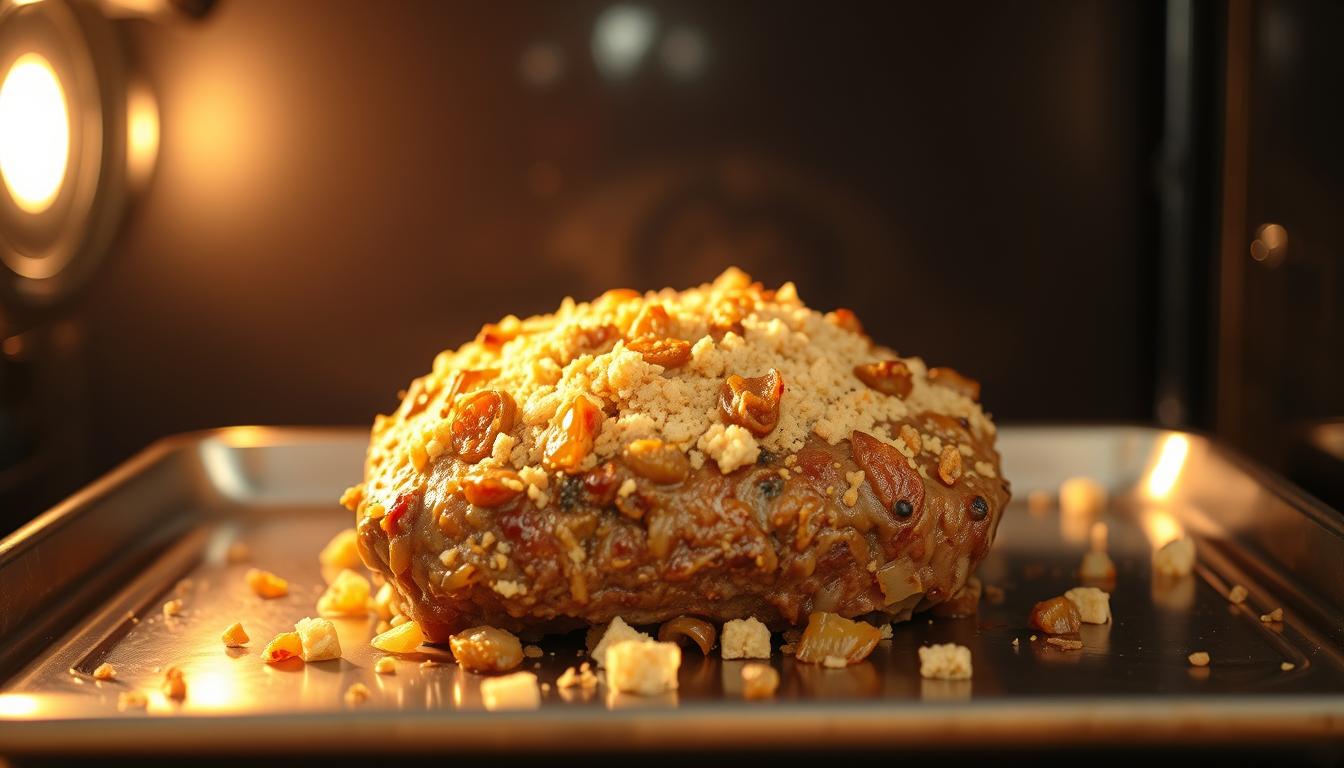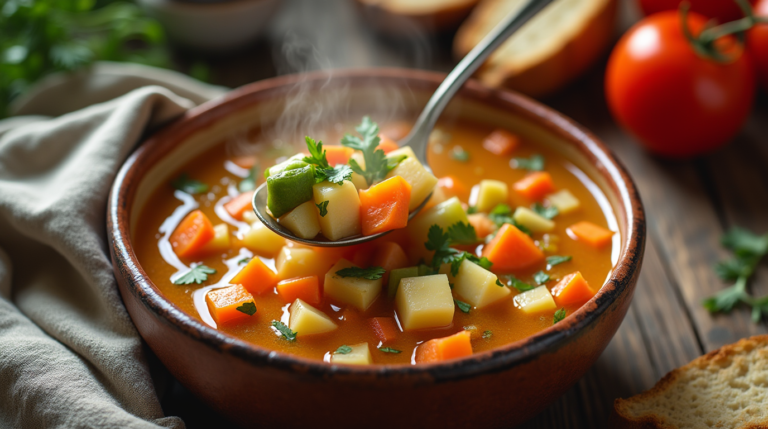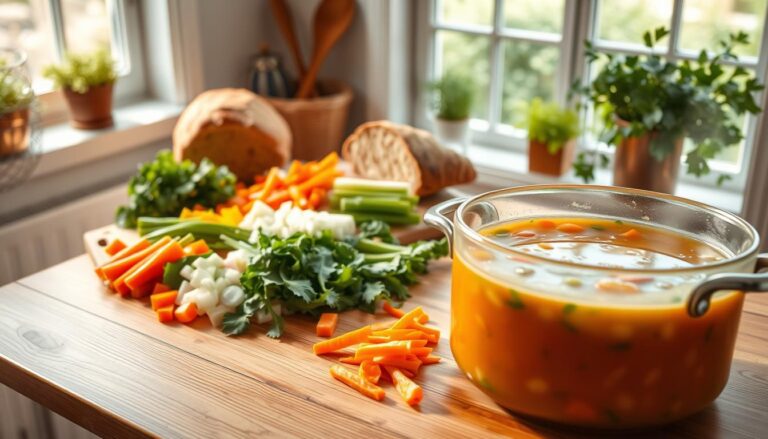What if the secret to a perfect family dinner has been sitting in your pantry all along? For decades, one classic recipe has stood the test of time, delivering a dish that’s both comforting and delicious. This isn’t just any recipe—it’s a tried-and-true favorite that’s been passed down through generations.
With just six simple ingredients, this easy meatloaf comes together in minutes. It’s juicy, flavorful, and perfect for busy weeknights or special occasions. The blend of tradition and modern taste makes it a standout dish that everyone will love.
Whether you’re a seasoned cook or just starting out, this recipe is designed to be foolproof. Ready to discover why this dish has become a family favorite? Let’s dive in and explore what makes it so special.
Table of Contents
Introduction to This Delicious Recipe
Imagine a dish that brings everyone to the table with its comforting aroma and rich flavors. This recipe is more than just food—it’s a tradition that connects generations. It’s the kind of meal that turns an ordinary evening into a special occasion.
The Appeal of a Family Favorite
What makes this dish a family favorite? It’s the perfect balance of simplicity and taste. With just a handful of ingredients, you can create something truly memorable. The secret lies in the onion soup mix, which adds depth and richness to every bite.
This recipe is versatile, allowing you to tweak it to your family’s preferences. Whether you’re cooking for a weeknight dinner or a holiday gathering, it’s a guaranteed crowd-pleaser.
Why You’ll Love This Soup Meatloaf
Here’s why this recipe stands out:
- Easy to Make: With minimal prep time, it’s perfect for busy schedules.
- Flavorful: The mix of ingredients creates a savory, juicy result.
- Family-Friendly: It’s a dish that appeals to both kids and adults.
Ready to make this classic? The next section will guide you through the steps to ensure a perfect outcome every time.
The Story Behind Lipton Onion Soup Meatloaf
Behind every great dish lies a story worth telling. The onion soup meatloaf is no exception. Its roots trace back to the early 20th century, when home cooks sought ways to elevate simple ingredients into hearty meals.
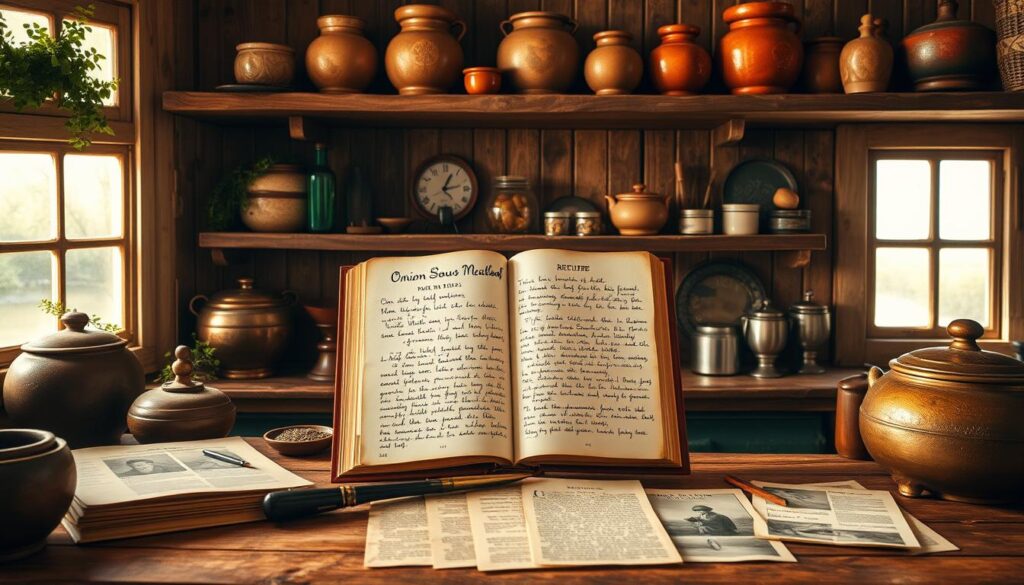
Historical Roots and Tradition
Meatloaf has been a staple in American kitchens since the 1930s. Early recipes often relied on basic ingredients like ground meat, breadcrumbs, and eggs. The introduction of soup mix in the mid-20th century changed the game. Brands like Lipton played a key role in popularizing this flavorful twist.
By adding a packet of onion soup mix, cooks discovered a shortcut to depth and richness. This innovation turned a humble dish into a family favorite. It also reflected the post-war era’s focus on convenience without sacrificing taste.
Evolution of the Classic Meatloaf
Over the decades, the recipe has evolved to suit modern tastes. While the core ingredients remain the same, variations have emerged. Some cooks add cheese, while others experiment with glazes or spices. Yet, the soup meatloaf recipe continues to hold its place as a timeless classic.
Today, this dish is more than just a meal—it’s a connection to the past. It reminds us of family gatherings, shared traditions, and the joy of simple, comforting food. Whether you’re making it for the first time or the hundredth, this recipe carries a legacy worth savoring.
Ingredients Breakdown for a Flavorful Meatloaf
The foundation of a great dish lies in its ingredients—each one plays a vital role. From the richness of ground beef to the binding power of eggs, every component contributes to the final flavor and texture. Let’s break down the essentials and explore how you can make this recipe your own.
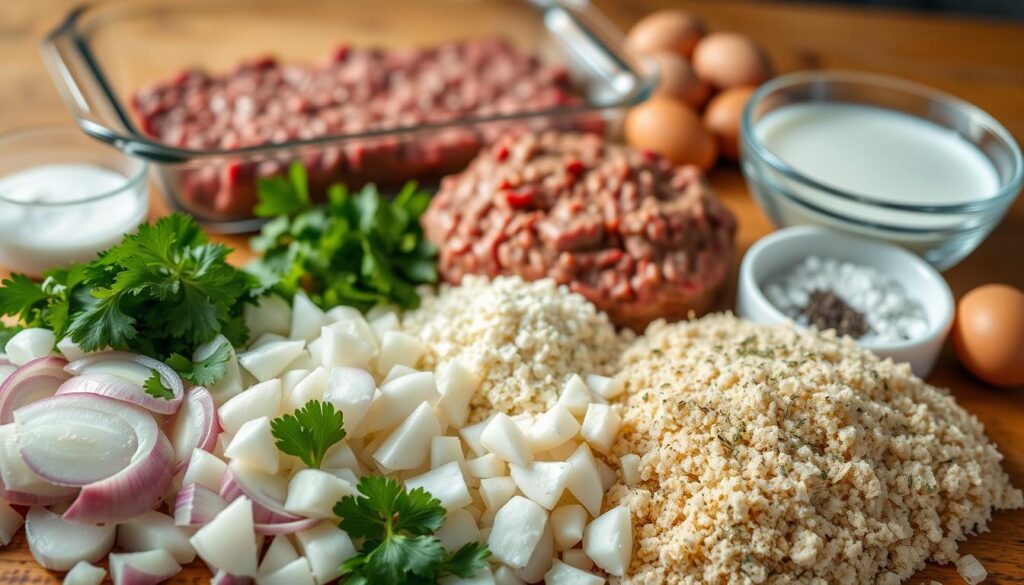
Essential Ingredients and Their Roles
Ground beef is the star of this dish, providing both flavor and structure. Opt for an 85% lean ratio to ensure juiciness without excess grease. Breadcrumbs, about 1/2 cup, act as a filler, absorbing moisture and keeping the meatloaf tender.
Eggs are the glue that holds everything together. Two large eggs are enough to bind the ingredients without making the mixture too dense. Onion, finely chopped, adds a subtle sweetness and depth of flavor that complements the savory profile.
Seasoning is crucial. A packet of dry onion soup mix infuses the dish with a rich, savory taste. If you prefer a homemade touch, you can use a blend of garlic powder, onion powder, and thyme.
Tips for Ingredient Alternatives and Upgrades
If you’re out of breadcrumbs, cracker crumbs or rolled oats make excellent substitutes. For a gluten-free option, almond flour works well. Want to boost the flavor? Add a 1/2 cup of grated Parmesan or a splash of Worcestershire sauce.
For a leaner version, you can use ground turkey or chicken instead of ground beef. Just add a tablespoon of olive oil to keep it moist. Fresh herbs like parsley or rosemary can elevate the dish, adding a burst of freshness.
Measurements matter. Use a standard measuring cup for accuracy, especially when adding breadcrumbs or liquids. Consistency ensures your meatloaf turns out perfect every time.
Step-by-Step Preparation Guide
Crafting a perfect dish starts with the right preparation, and this guide will walk you through every step. From gathering ingredients to shaping your loaf, these instructions ensure a flawless result every time.
Prepping and Mixing the Ingredients
Begin by gathering all your ingredients. In a large bowl, combine the ground meat, breadcrumbs, and beaten eggs. Add the seasoning mix and a splash of water to keep the mixture moist. Use your hands or a spoon to blend everything gently.
Avoid overmixing, as this can make the final dish dense. Aim for a uniform consistency where all ingredients are evenly distributed. This step takes about 5 minutes and sets the foundation for a flavorful result.
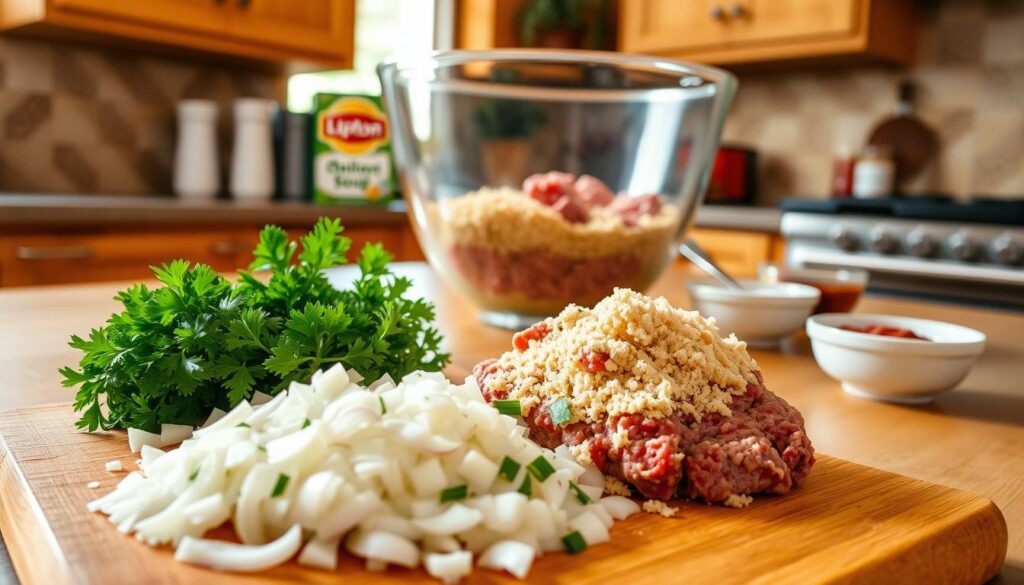
Shaping and Setting Up Your Loaf
Once the mixture is ready, transfer it to a greased pan. Shape it into an even loaf, ensuring it’s compact but not too tight. This helps it cook evenly and retain its shape during baking.
If you’re using a dedicated loaf pan, press the mixture gently into the corners. For a baking dish, shape it free-form, leaving space around the edges for air circulation. This step takes about 3 minutes and ensures a professional finish.
Preheat your oven to 350°F while you prepare the glaze or toppings. Proper timing ensures your dish bakes perfectly without drying out.
Mastering Cooking Techniques for Lipton Onion Soup Meatloaf
Achieving the perfect dish often comes down to mastering the right techniques. Whether you’re a seasoned cook or a beginner, understanding how to use your oven and monitor temperature can make all the difference. Let’s dive into the details to ensure your dish turns out juicy, flavorful, and perfectly cooked every time.
Optimal Oven Settings and Equipment
Preheat your oven to 350°F for even cooking. This temperature ensures the exterior crisps up while the center stays moist. Use a loaf pan for a traditional shape or a shallow baking sheet for a crispier crust. Both options work well, so choose based on your preference.
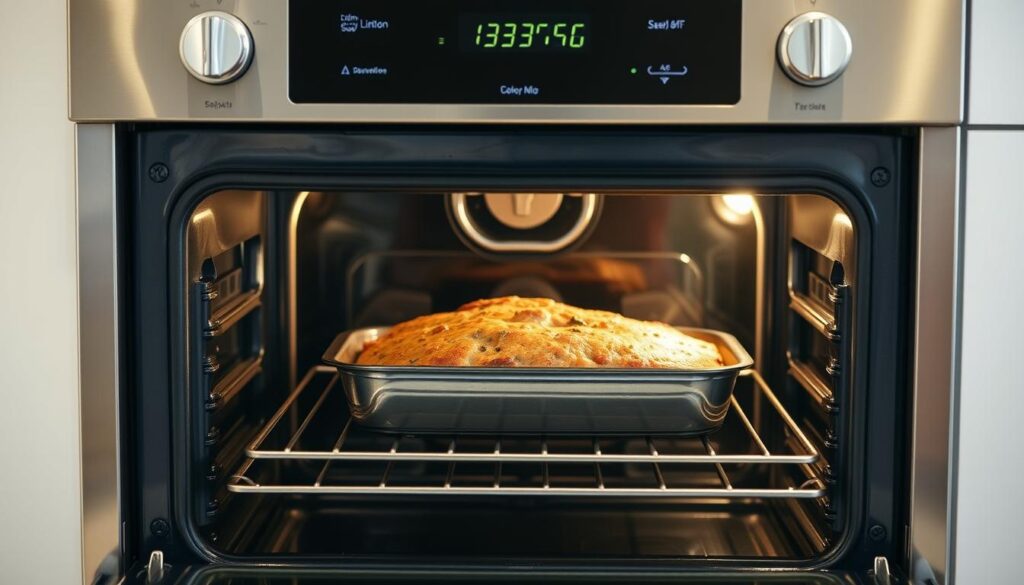
If you’re using a loaf pan, line it with parchment paper for easy removal. For a baking sheet, shape the mixture into a free-form loaf. This allows heat to circulate evenly, resulting in a consistent texture.
Monitoring Internal Temperature for Juicy Results
To avoid dryness, use an instant-read thermometer to check the internal temperature. The ideal reading is 160°F, which ensures the dish is fully cooked while remaining juicy. Insert the thermometer into the thickest part of the loaf for accuracy.
Let the dish rest for 10 minutes after baking. This allows the juices to redistribute, making it easier to slice without falling apart. Use a sharp knife for clean, even cuts.
| Equipment | Benefits |
|---|---|
| Loaf Pan | Traditional shape, easy to handle |
| Baking Sheet | Crispier crust, even heat circulation |
By following these tips, you’ll achieve a dish that’s crispy on the outside, tender on the inside, and bursting with flavor. Happy cooking!
How to Enhance Flavor and Texture
Enhancing the flavor and texture of your dish can elevate it from good to unforgettable. With a few simple tweaks, you can create a meal that’s rich, juicy, and bursting with taste. Let’s explore how to make the most of your ingredients and techniques.
Using Seasonings and Sauces
Seasonings are the secret to depth and richness. A packet of dry soup mix adds a savory punch, but don’t stop there. Add a splash of Worcestershire sauce or a dollop of ketchup to the mix for extra tang. For a sweet glaze, combine ketchup, brown sugar, and a hint of vinegar.
High-quality beef also plays a crucial role. Opt for an 85/15 or 90/10 ratio to ensure juiciness without excess grease. If you’re using leaner meats like turkey, add a tablespoon of olive oil to keep it moist.
Avoiding Common Pitfalls
Overmixing is a common mistake that can lead to a dense, unappetizing result. Mix your ingredients just enough to combine them evenly. Use your hands or a spoon gently to preserve the tender texture.
Monitor the internal temperature carefully. For beef, aim for 160°F to ensure it’s fully cooked but still juicy. Let it rest for 10 minutes before slicing to lock in the flavor and moisture.
Creative Variations and Serving Ideas
Turn your leftovers into a whole new meal with creative twists that everyone will love. Whether you’re looking for a quick lunch or a hearty dinner, these ideas will make your dish shine.
Transforming Leftovers into Tasty Sandwiches
One of the easiest ways to enjoy leftovers is by turning them into sandwiches. Slice your dish thinly and layer it on fresh bread or a toasted bun. Add a spread of mayonnaise or mustard for extra flavor.
For a gourmet touch, top with melted cheese, caramelized onions, or a fried egg. These sandwiches are perfect for a quick meal the next day or even as a packed lunch.
Pairing Sides for a Complete Dinner
To create a well-rounded dinner, pair your dish with complementary sides. Mashed potatoes, steamed vegetables, or a fresh salad are classic choices that balance the richness of the main dish.
For a more creative approach, try roasted sweet potatoes, garlic green beans, or a quinoa salad. These sides add variety and nutrition to your meal.
| Side Dish | Why It Works |
|---|---|
| Mashed Potatoes | Creamy texture complements the savory dish |
| Steamed Vegetables | Adds freshness and balances richness |
| Quinoa Salad | Provides a healthy, protein-packed option |
With these ideas, you can transform a simple dish into a full, satisfying meal. Experiment with different combinations to find your family’s favorites.
How to Store and Reheat Your Meatloaf
Leftovers can taste just as good as the original with a few simple steps. Proper storage and reheating methods ensure your dish stays fresh, juicy, and full of flavor. Whether you’re saving a slice for lunch or freezing a whole loaf, these tips will help you make the most of your meal.
Proper Storage Techniques for Leftovers
To keep your dish fresh, store it in an airtight container. This prevents air from drying it out and locks in moisture. If you’re storing a whole loaf, wrap it tightly in plastic wrap before placing it in the container. For individual slices, separate them with parchment paper to avoid sticking.
Your leftovers can stay in the fridge for up to four days. For longer storage, freeze them. Wrap the loaf or slices in plastic wrap, then place them in a freezer-safe container or zip-top bag. Label it with the date to keep track of freshness.
Effective Reheating Methods for Best Taste
Reheating your dish properly is key to preserving its flavor and texture. For the oven, preheat it to 350°F and place the loaf or slices on a baking sheet. Cover with aluminum foil to retain moisture and heat for 20-30 minutes. Use a meat thermometer to ensure the internal temperature reaches 165°F.
If you’re short on time, the microwave works too. Place a slice on a microwave-safe plate and cover it with a damp paper towel. Heat in 1-2 minute intervals, checking for warmth. This method is quick but may slightly alter the texture.
Here’s a quick comparison of reheating methods:
| Method | Time | Best For |
|---|---|---|
| Oven | 20-30 minutes | Retaining moisture and texture |
| Microwave | 1-2 minutes per slice | Quick reheating |
With these tips, your leftovers will taste just as delicious as the day you made them. Enjoy every bite!
Conclusion
Bringing a classic recipe to life is easier than you think. With simple ingredients like ground beef and a packet of onion soup mix, you can create a dish that’s both flavorful and comforting. This recipe is perfect for busy schedules, requiring minimal prep time and delivering maximum taste.
Remember to use foil when baking to lock in moisture and ensure even cooking. Whether you’re cooking for a weeknight dinner or a special occasion, this dish is versatile and easy to customize. Swap ingredients to suit your preferences and make it your own.
Enjoy this meal with your family and share the joy of a timeless recipe. With these tips, you’ll master the art of creating a dish that’s both delicious and memorable. Happy cooking!
FAQ
Can I use a different brand of onion soup mix for this recipe?
Yes, you can substitute with any brand of onion soup mix. The flavor may vary slightly, but it will still work well in the recipe.
How long should I cook the meatloaf in the oven?
Cook it at 350°F for about 1 hour, or until the internal temperature reaches 160°F. Use a meat thermometer for accuracy.
Can I make this recipe gluten-free?
Absolutely! Use gluten-free breadcrumbs and ensure your onion soup mix is gluten-free to adapt the recipe.
What sides pair well with this dish?
Mashed potatoes, roasted vegetables, or a fresh green salad make excellent accompaniments for a complete dinner.
How do I store leftovers?
Store leftovers in an airtight container in the refrigerator for up to 3 days. Reheat in the oven or microwave for best results.
Can I freeze the meatloaf?
Yes, wrap it tightly in foil or plastic wrap and place it in a freezer-safe container. It can be frozen for up to 3 months.
What’s the best way to reheat leftover meatloaf?
Reheat slices in the oven at 325°F for about 15-20 minutes or until warmed through. This helps retain moisture and flavor.
Can I add other ingredients to enhance the flavor?
Yes, try adding Worcestershire sauce, garlic powder, or grated Parmesan cheese to the mixture for extra depth of flavor.
Is it necessary to cover the meatloaf while baking?
Covering it with foil for the first 30 minutes helps retain moisture. Remove the foil for the remaining time to allow the top to brown.
Can I use ground turkey instead of ground beef?
Yes, ground turkey is a great alternative. Just ensure it reaches an internal temperature of 165°F for safety.

